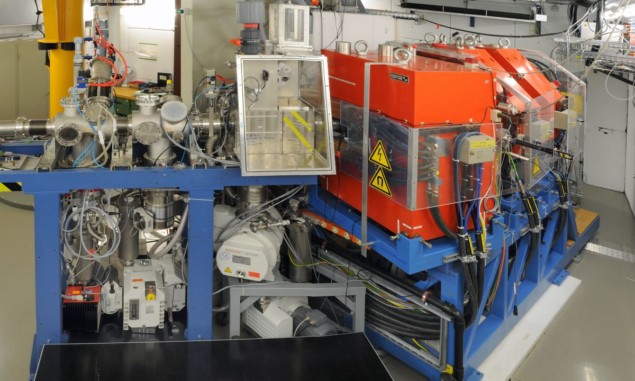
A new isotope of darmstadtium and a new excited state of copernicium-282 have been found in the decay chains of the superheavy element flerovium by an international team of researchers. The discoveries made by Anton Såmark-Roth of Lund University in Sweden and colleagues provide important clues to nuclear physicists trying to make long-lasting superheavy elements that lie within islands of stability.
First synthesized in 2002, oganesson has an atomic number of 118 and is currently the heaviest known chemical element. Since its discovery, researchers have continued their search for even heavier elements but face a major barrier. As elements become heavier, growing imbalances between proton and neutron numbers tend to make them increasingly unstable, making it increasingly difficult for researchers to synthesize them in the lab.
This trend is reversed somewhat when nuclei contain “magic” numbers of protons or neutrons. This creates “islands of stability” in an otherwise turbulent part of the chart of nuclides – which plots nuclei in terms of their proton and neutron content. These islands could provide crucial steppingstones for researchers aiming to synthesize elements heavier than oganesson. One such island is believed to occur at around flerovium-298, which is predicted to be “doubly magic” for protons and neutrons. This isotope cannot currently be produced in the lab but is a target of great interest to nuclear physicists.
Alpha decay
In their experiment, Såmark-Roth’s and colleagues studied the decays of two lighter versions of that element: flerovium-288 and 286. These isotopes were created by firing an intense beam of calcium ions into plutonium, using the TASCA facility at the GSI Helmholtz Centre for Heavy Ion Research in Darmstadt Germany. After its formation, the flerovium decays rapidly by emitting alpha particles (helium-4 nuclei), producing unstable nuclei that go on to decay themselves.

Biggest expansion of known chemical universe targeted by FRIB nuclear facility
The team studied the decay chains using high-resolution nuclear spectroscopy, which involves measuring the different types of radiation emitted by decaying nuclei. Although dozens of chains were detected, two were of particular interest. One is flerovium-288 decaying to copernicium-284, which itself decays to darmstadtium-280 – an isotope that had not been observed before. In the second decay chain, flerovium-286 decays to an excited state of copernicium-282, which contains even numbers of both protons and neutrons. Again, this had never been seen before in an excited superheavy nucleus.
The observation of these decay chains and the existence of the excited state of copernicium-282 provide important information for physicists developing theoretical models of flerovium-298 and could also point physicists in the right direction to discover islands of stability.
The research is described in Physical Review Letters.



